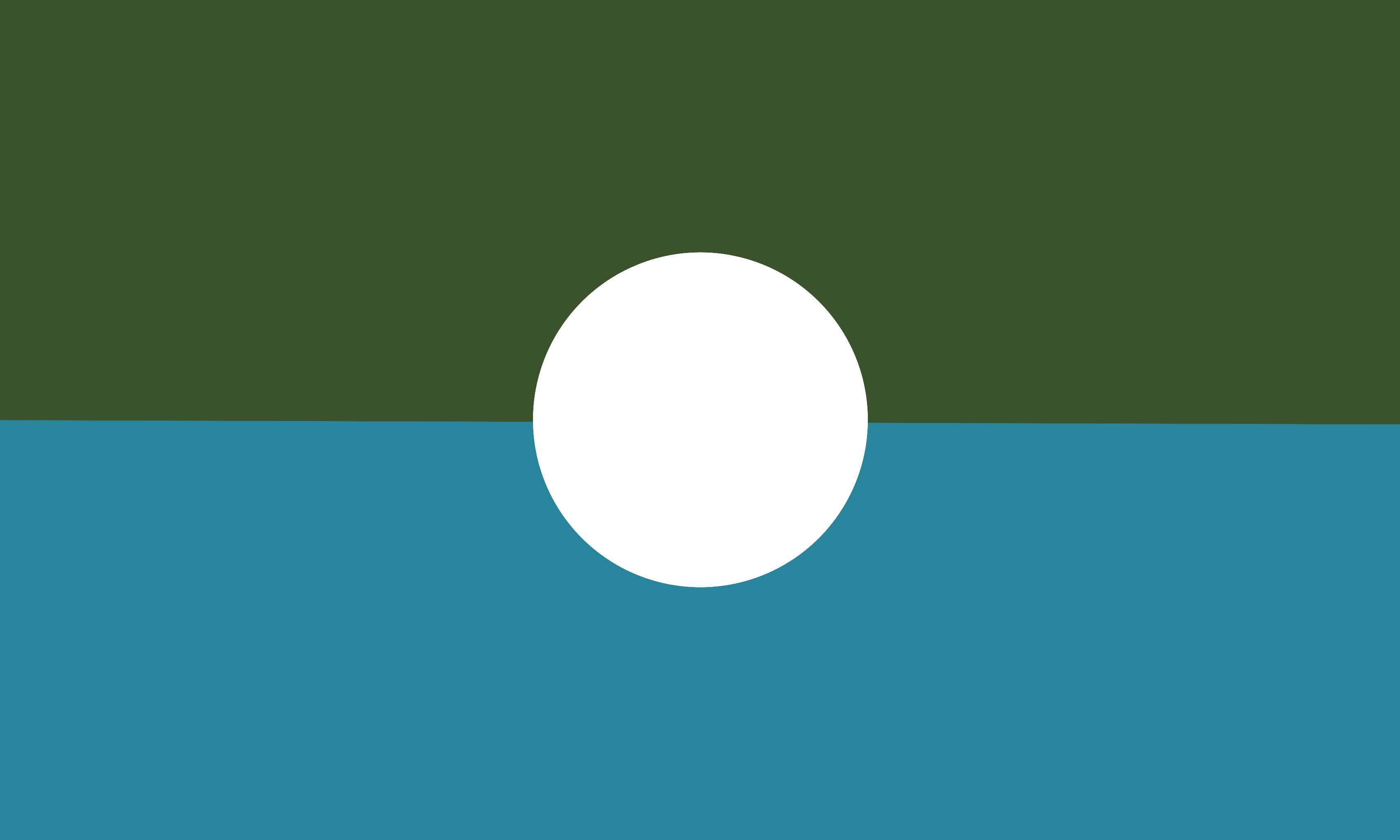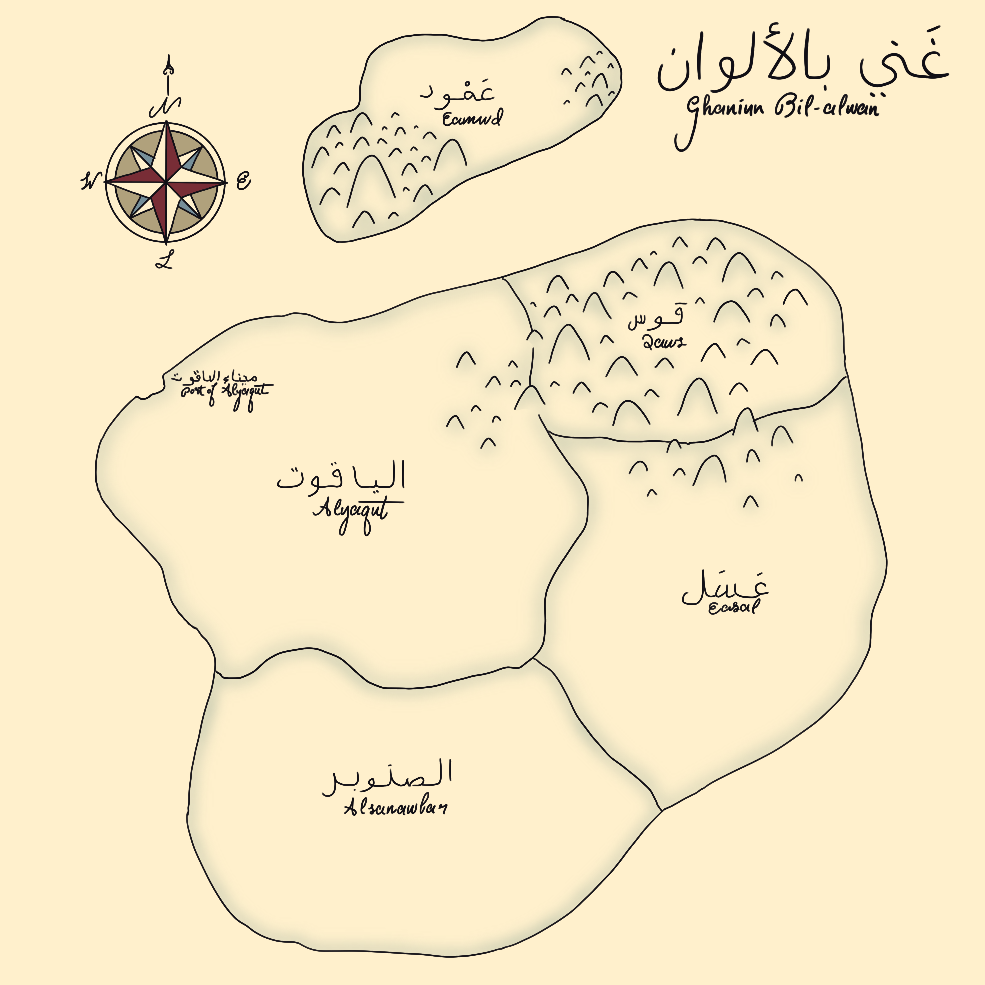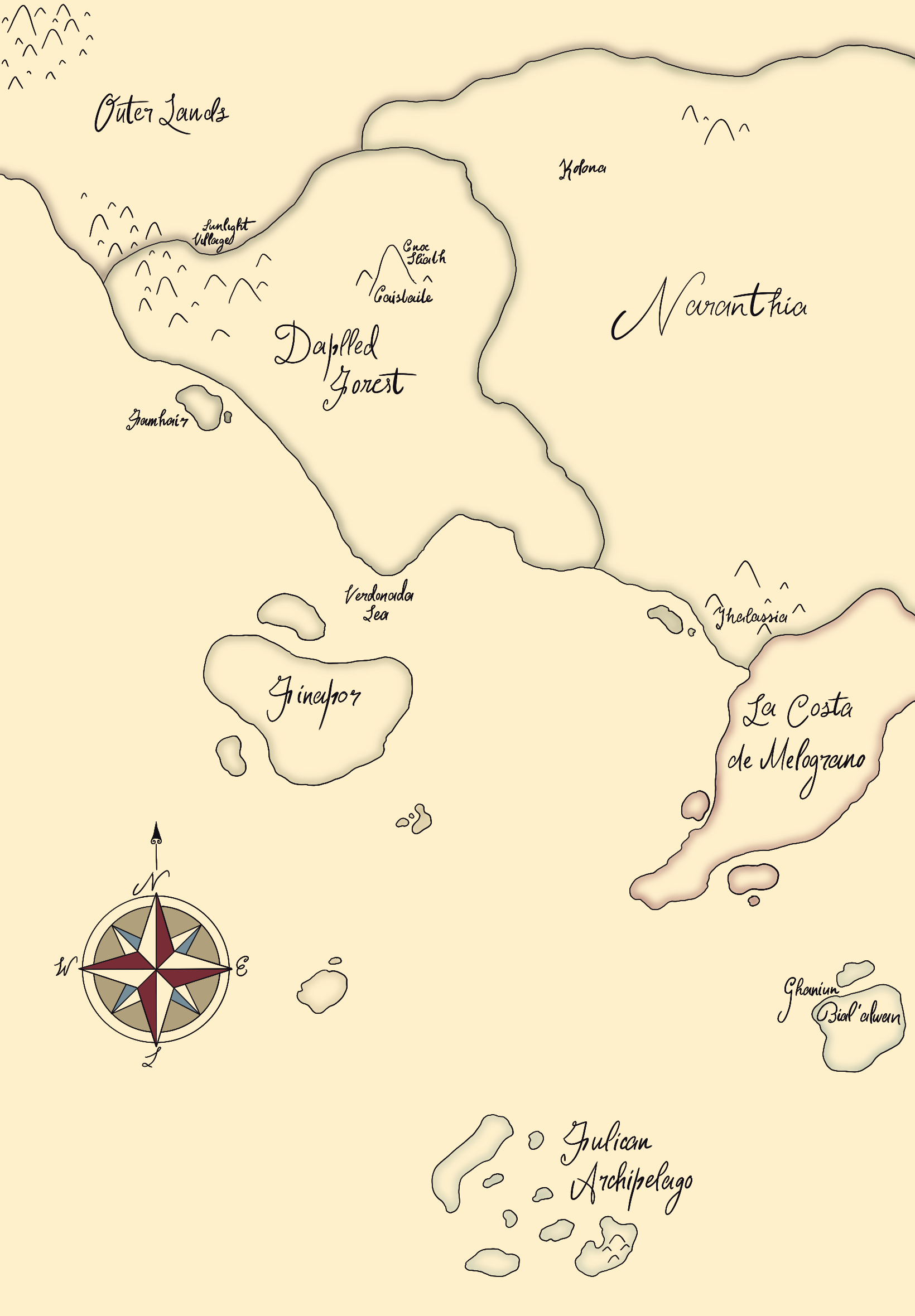Ghaniun Bil'alwan
The Flag

Capital: الياقوت (Alyaqut)
Official Language: كَلِمات أُغْنِية (Kalimat 'Ugni)
Other Languages: Common, Melogranian, Գաղտնիք (Gaghtnik), Foraoisteanga, Coillecànan, Finaporean, Tafod
Currency: Shells
History
Ghaniun Bil'alwan (غَني بالألوان) was originally inhabited by a small group of sirens who had come from the northeastern Fulican Archipelago. Starting in the 12th century, elves fleeing Ossocanti rule in La Costa de Melograno began to immigrate there. The sirens, who already had an established port and society on the land, welcomed the elves in, permitting them to establish their own subculture in the capitol of Alyaqut (الياقوت). When the First Elven War started in 1256, many fae and elves fleeing Naranthia and the Dappled Forest found themselves there. While the Naranthian elves quickly integrated into the Costan-Ghanian elven culture in Alyaqut and other municipalities on Ghaniun Bil'alwan, the Seelie fae of the Dappled Forest isolated themselves, believing the sirens and the elves of the island to be untrustworthy.
Culture
Because of its siren majority population—referred to as the Sukkān Mawja (مَوْجَة سُكّان; Common: Wave Inhabitants), or the Jri Bnakič'ner (Ջրի Բնակիչները; Common: Water Dwellers)—the municipalities on Ghaniun Bil-alwan operate similarly to most siren communities throughout the world, with the strongest influence being from the Fulican Archipelago, just southwest of the island. However, there are noticable outside influences from the elven minority on the island. The most common religion practiced on the island is called Turab (تُراب). Followers believe in a central diety, called Al'Awhad (الأوحد; Common: The One), who has many 'awliya (أولياء; Common: saints) who are prayed to for specific boons or assistance.
Elven Minority
Called Alhaduwn (الحادون; Common: The Pointed Ones) in Kalimat 'Ugni and Danakner (Դանակներ; Common: Knives) in Gaghtnik, the elven minority on Ghaniun Bil'alwan was originally composed of Melogranian elves who came to the island either as merchants, or to escape persecution by the Ossocanti colonial regime. When Naranthian refugees came from the mainland during the First Elven War, they settled in the Alhaduwn population in Alyaqut. this has led to two separate elven subcultures on the island—the Muwayh (مويه; Common: Little Water), descended from Melogranian elves, and the Gaba (غابة; Common: Wood), descended from Naranthians.
During the 1980s, there was a large influx of elves from the Thalassia region of Naranthia. Despite the fact that they were technically Gaba elves, they integrated into the Muwayh subculture, due to the similarity between Thalassian and Melogranian culture.
Seelie Minority
Originally a small group of refugees from the Dappled Forest living in a rural area of Eamwd, Almakhfiuwn (المخفيون; Common: The Hidden Ones), referred to in their own language as the Kakhardner (Կախարդներ; Common: Magicians), were purposefully isolated from the rest of the island. The village that they founded, named Yerkink (Երկինք), was primarily a farming community. However, after many years of off-and-on drought between 1296 and 1302, they were forced to open up their community to trade with the municipality of Eamwd, several kilometers away. It was at this point that knowledge of Kakhardner culture began to be recorded. Currently, the population of the Eamwd sector is approximately 30% Kakhardner.
The religion followed by the Kakhardner is similar to Ceathodann. The Astvatsuhi (Աստվածուհի; Common: Goddess) is a woman with three faces, who can see the past, the present, and the future respectively. Holidays celebrating the beginning of each season, the harvest, and the full and new moons are extremely imporant to the social functioning of Kakhardner communities.
Languages
The official language of Ghaniun Bil'alwan is called Kalimat 'Ugni (كَلِمات أُغْنِية) and is spoken by approximately 86% of the population. Most people also speak at least some Common, which allows communication with foreign visitors. The third most common language is Melogranian, one of the two official languages spoken in La Costa de Melograno.
The Kakhardner population primarily speaks a language called Gaghtnik (Գաղտնիք), also called Seelie Ghanian. It is spoken by 95% of the Seelie population, and about 7% of the total population of the island. It did not developed from Foraoisan, the official language of the Dappled Forest, leaving its origins unclear. However, it does seem to have been influenced by Kalimat 'Ugni, Motukohanian, as well as some languages from the Outer Lands.
While majority of both the Muwayh and Gaba popluations speak Kalimat 'Ugni as their primary language, they have two distinct dialects. Muwayh Kalimat 'Ugni has influences from Melogranian, as well as Motukohanian, while Gaba Kalimat 'Ugni has influence from the Naranthian language.
Society
Due to its size, and the integration of non-siren groups, Ghaniun Bil'alwan has a structured government based off of governance structures imported by elves in the 12th century. The island is ruled by group of 5 viziers (Kalimat 'Ugni: وزير; Gaghtnik: վեզիր), who are all elected by the people of their sector. The five sectors of the island are named after the municpality there, but their borders often expand past that of the municpality into the surrounding forests.
Sectors
- Alyaqut
- Kalimat 'Ugni: الياقوت
- Gaghtnik: Ալյակուտ
- Vizier: Alim Hicranzadeh (Siren)
- Easal
- Kalimat 'Ugni: عَسَل
- Gaghtnik: Ասալ
- Vizier: Bulut Narinzadeh
- Alsanawbar
- Kalimat 'Ugni: الصنوبر
- Gaghtnik: Ալսանաբար
- Vizier: Fidan Yesimzadeh
- Qaws
- Kalimat 'Ugni: قوس
- Gaghtnik: Կաուս
- Vizier: Nermin Sedazadeh
- Eamwd
- Kalimat 'Ugni: عَمْود
- Gaghtnik: Ամուդ
- Vizier: Katar Varduhiyan (Kakhardner)

